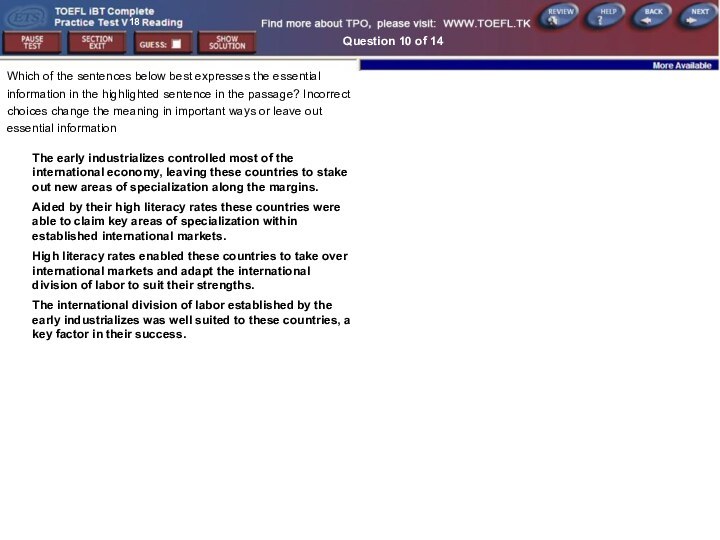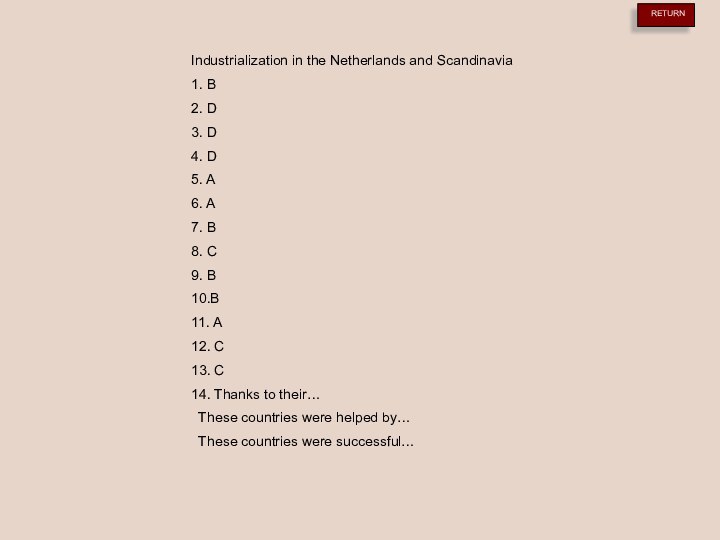left bottom corner of the screen to time your
test.press this button to set the timer
pause countdown
Input a number
start countdown
FindSlide.org - это сайт презентаций, докладов, шаблонов в формате PowerPoint.
Email: Нажмите что бы посмотреть





















press this button to set the timer
pause countdown
Input a number
start countdown
They were completely industrialized by the start of the nineteenth century.
They possessed plentiful supplies of coal.
They were overtaken economically by the Netherlands and Scandinavia during the early nineteenth century.
They succeeded for the same reasons that the Netherlands and Scandinavia did.
It was a more important factor than population size.
It was more influential than the rate of population growth.
It was more important in the early stages than it was later.
It was not a significant factor.
The relatively small size of their populations
The rapid rate at which their populations were growing
The large amount of capital they had available for investment
The high proportion of their citizens who were educated
low-cost transportation of goods
access to fish
shipbuilding industrial
military control of the sea
generally liberal trade policies
huge projects undertaken by the state
relatively uncorrupt governments
relatively little social or political disruption
support the claim that the political institutions of the four countries posed no significant barriers to industrialization or economic growth
identify an exception to the general trend favoring liberal trade policy
explain why Sweden industrialized less quickly than the other Scandinavian countries and the Netherlands
provide evidence that agricultural reforms take place more quickly in countries that have a liberal trade policy than in those that do not
The early industrializes controlled most of the international economy, leaving these countries to stake out new areas of specialization along the margins.
Aided by their high literacy rates these countries were able to claim key areas of specialization within established international markets.
High literacy rates enabled these countries to take over international markets and adapt the international division of labor to suit their strengths.
The international division of labor established by the early industrializes was well suited to these countries, a key factor in their success.
lacked stability
were not well suited to agricultural products
were largely controlled by the early industrializes
led to slower growth of local industries
A steadily rising national income
Greater control over market fluctuations
High returns when things went well
A reduced need for imports
During this period, Sweden had the highest rate of growth of output per capita of any country in Europe, and Denmark was second.
■ 1
To review passage. Click View Text
●
●
●
Answer Choices